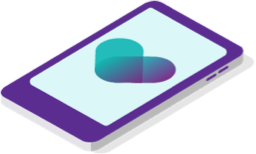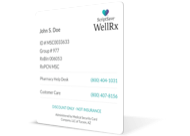Copyright 2024
Medical Security Card Company, LLC
All Rights Reserved
WellRx will never sell your personal information. Period. By signing up I agree to WellRx's terms of use and privacy policy.
By Jillian Foglesong Stabile, M.D.
September 06, 2023
Overactive bladder is a very common medical problem. One study found that about 16.5 people met the criteria for overactive bladder. This calculates to about 33 million American adults. Overactive bladder can have a significant impact on quality of life and may be underdiagnosed because many patients experience embarrassment regarding the symptoms.
The primary symptom of an overactive bladder is urinary urgency. Urinary urgency is the sensation of needing to empty your bladder immediately. Other symptoms of overactive bladder include urinary frequency, nocturia (the need to wake up more than twice a night to pee), and urinary urge incontinence (loss of bladder control related to urgency). These symptoms can cause embarrassment and lead to restricted activities and social isolation. Nocturia can affect sleep quality and cause drowsiness and symptoms associated with sleep deprivation.
The cause of overactive bladder is not well understood. It is thought to be due to overactivity of the detrusor muscles that line the bladder. More recent studies have shown that not all patients with overactive bladder have overactivity in these muscles, so there may be other causes for the condition as well.
Overactive bladder is diagnosed based on symptoms. Your healthcare provider will take a detailed history, which includes the type of symptoms, when they started, and how severe they are. Your healthcare provider may use a questionnaire to evaluate the symptoms such as the international consultation on incontinence questionnaire. This is a standardized tool to help determine the impact of your symptoms on your life.
Your medical history will also help your healthcare provider rule out other medical conditions that could contribute to your symptoms. Several medical conditions increase your risk of developing an overactive bladder including anxiety, depression, gastrointestinal conditions such as irritable bowel syndrome or constipation, and menopause. Women with overactive bladder may have a history of pelvic injuries during birth, and previous surgery, prolapse of the bladder or other pelvic organs. There is also a correlation between overactive bladder and obesity in women.
Men with overactive bladder should be evaluated for benign prostatic hypertrophy. This can make it difficult to empty the bladder and cause urgency and frequency. Treating the enlarged prostate gland can decrease the bladder symptoms. Benign prostatic hypertrophy risk increases as men age. Treating this condition early can help prevent overactive bladder symptoms and incontinence from developing.
Your medications may also play a role in overactive bladder. Some blood pressure medications can affect the urinary function. Diuretics (water pills) can increase urgency and frequency. Antidepressants can cause urinary retention (inability to empty bladder completely) and incontinence related to an over-full bladder.
You may be asked to keep a bladder diary. A bladder diary includes keeping track of what fluids you drink, how much fluid you drink, how often you empty your bladder, how much urine you empty from your bladder, any episodes of incontinence, and how often you are having urgency.
Your healthcare provider may perform tests. The most common test ordered is urinalysis and culture. Urinalysis is a test that examines your urine for evidence of urinary tract infection. It can also look for evidence of blood, sugar, and protein in your urine. Evidence of these in your urine could mean that your symptoms are attributable to other conditions such as infection, diabetes, or kidney disease. A urine culture will also help rule out infection as a source of your symptoms.
Another test that may be performed, though it is less frequent, is a post-void residual. After urinating, the amount of urine in your bladder is evaluated using either a urinary catheter or an ultrasound of the bladder. Other potential tests to rule out underlying conditions include bladder/renal ultrasound, cystoscopy (putting a camera in the bladder to look for abnormalities), CT, and MRI. These more advanced tests are not used routinely in patients with uncomplicated overactive bladder.
There is also a test called urodynamics that is also used only in more severe cases of overactive bladder if there is a question as to the accuracy of the diagnosis or a concern for other conditions. Urodynamic studies are generally performed by a urology specialist and are pursued when your symptoms don’t respond to the usual treatments for overactive bladder.
The American Urological Association has released guidelines on the diagnosis and treatment of overactive bladder. One of the first-line treatments for overactive bladder is behavioral therapy. Behavioral therapy may include bladder training which involves using bladder diaries and bladder control strategies such as timed voiding, prompted or scheduled voiding, or delayed voiding. Other therapies include pelvic floor muscle therapy. This involves urgency suppression, control strategies, and biofeedback. There is good evidence to support the use of these therapies as first-line treatment.
Lifestyle changes may also be helpful for an overactive bladder. Lifestyle changes include changing your caffeine and fluid intake, changing your diet, or losing weight. Large amounts of caffeine can contribute to incontinence, and large amounts of fluids can contribute to urinary frequency. Weight loss can decrease incontinence and urgency by 42-47% in obese women in one study.
First-line treatment for overactive bladder should also include treating any underlying conditions such as obstructive sleep apnea, diabetes, and congestive heart failure. Irritable bowel syndrome and constipation should also be addressed if present. Addressing these underlying conditions is important for overall health and may help with decreasing the symptoms of overactive bladder.
Second-line treatments for overactive bladder include pharmacological treatment. The medications for overactive bladder primarily treat the symptoms of overactive bladder.
One of the commonly used classes of medications for overactive bladder is antimuscarinic agents. This class of medications includes hyoscyamine and oxybutynin. There are also several newer medications in this class. These medications can be administered orally or by gel or patch. They may be short-acting or long-acting. Longer-acting forms of these medications are preferred because they have fewer side effects. These medications are anticholinergic, which means that they can cause urinary retention, constipation, and dry mouth.
If these symptoms occur and are bothersome, changing the medication or the dose of the medication is usually tried before looking at other medications. Antimuscarinic agents should not be used in patients who have a history of urinary retention, delayed gastric emptying, and narrow-angle glaucoma. They should be used with extreme caution in elderly patients due to the risk of cognitive impairments in this population.
There are two medications in this class. Mirabegron and Vibegron work by affecting the beta3-adrenergic receptors. This causes relaxation in the detrusor muscle and allows the bladder to fill more. Potential side effects of these medications include elevated blood pressure in patients who have a history of high blood pressure, urinary tract infections, and dry mouth. They seem to have fewer side effects but should not be used in patients with uncontrolled high blood pressure.
If first and second-line treatments for overactive bladder aren’t working for you, your healthcare provider may recommend referral to a specialist for other treatments. The third-line treatments for overactive bladder include sacral neuromodulation, peripheral tibial nerve stimulation, or injection of onabotulinumotoxin A (Botox) directly into the detrusor muscle of the bladder. Third-line treatments are typically performed by a urologist or urogynecologist.
Sacral neuromodulation is a minimally invasive surgical procedure that involves implanting a device to affect the nerves that supply the bladder. The full mechanism for how this works is not completely understood. This treatment has been shown to improve symptoms in more than 80% of people.
Posterior tibial nerve stimulation is another third-line treatment of overactive bladder. This treatment involves stimulating a nerve on the medial side of the knee. This can be accomplished using a needle, sticky pads, or an implantable device. It has similar efficacy to the antimuscarinic agents.
Botox is a medication that is derived from botulism toxin. It can be injected directly into the bladder muscle by a healthcare provider to relax the bladder muscle and relieve overactive bladder symptoms.
Generally speaking, catheters to drain the bladder are not recommended for overactive bladder. In very rare cases, surgery to reconstruct the bladder or to divert the urinary tract is performed. These are typically used only when the symptoms are severe, don’t respond to any of the other treatments, and are very complicated.
Overactive bladder is a very common condition and you should talk with your healthcare provider if you have any of the symptoms. Treating this condition can significantly improve your quality of life.
If your healthcare provider has recommended medication for overactive bladder or your other medical conditions, ScriptSave WellRx may be able to help. Some people save a little. Some people save a lot. Even pharmacies across the street from each other can have huge price differences. We aim to bring transparency to prescription medication pricing, helping consumers keep more money in their pockets.
Dr. Foglesong Stabile is a board-certified Family Physician who enjoys full scope Family Medicine including obstetrics, women’s health, and endoscopy, as well as caring for children and adults of all ages. She also teaches the family medicine clerkship for Pacific Northwest University of Health Sciences.
References:
https://www.ncbi.nlm.nih.gov/pmc/articles/PMC5903463/
https://iciq.net/wp-content/uploads/2019/08/Sample-ICIQ-UI-Short-Form.pdf
https://www.ncbi.nlm.nih.gov/pmc/articles/PMC5426936/
https://www.aafp.org/pubs/afp/issues/2013/0601/p800.html
https://www.bmj.com/content/344/bmj.e2130
https://pubmed.ncbi.nlm.nih.gov/16398909/

For your convenience, use the ScriptSave® WellRx mobile app. Now savings are well in hand, right at the pharmacy counter. Save on your family's prescription medicines.
Learn More
Your choice. Get a ScriptSave WellRx Savings Card. Or Download the free mobile app from the App Store or Google Play Store
Get A Card
ScriptSave WellRx Grocery Guidance leverages leading-edge nutritional data science to help you know which food products on your grocery store shelf are truly good for YOU.
Healthy Foods For YouTags:

November 07, 2024

October 23, 2024

May 07, 2024
You need to log into the site to use this feature
This feature requires registration. Sign up or log in to your free WellRx account to gain access to this and other tools to help make managing your medications and wellness easier.
Benefits Include:
 Store & manage your medication list
Store & manage your medication list
 Medication pricing updates
Medication pricing updates
 Medication information
Medication information
 Pill & refill reminders
Pill & refill reminders
 Medication journal & mood log
Medication journal & mood log
This feature requires registration. Sign up or log in to your free WellRx account to gain access to this and other tools to help make managing your medications and wellness easier.
Benefits Include:
 Store & manage your medication list
Store & manage your medication list
 Medication pricing updates
Medication pricing updates
 Medication information
Medication information
 Pill & refill reminders
Pill & refill reminders
 Medication journal & mood log
Medication journal & mood log
You will be redirected to your program in 5 seconds.
Our Terms and Conditions and Privacy Policy have recently been updated.
By declining you will be logged out of your account